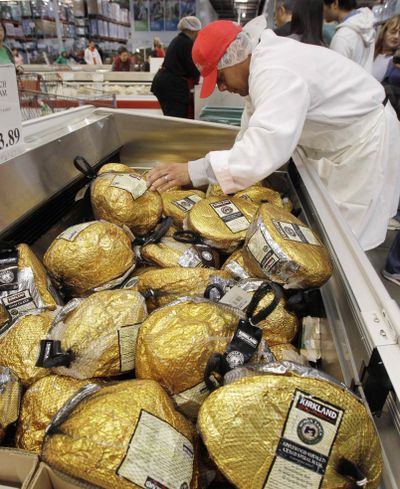Manufacturing boost could signal upswing
Increase in retail sales, steady prices add to good news

WASHINGTON – After leading the economy out of recession last year and then flagging over the summer, manufacturers might be getting a second wind.
Factories boosted their output in October by the most since July, the Federal Reserve said Tuesday. Its report follows several other positive readings on the economy, including data released Monday that showed retail sales rose in October by the most in seven months.
“After a pretty disappointing summer, the economic recovery might be picking up,” said Paul Ashworth, an economist at Capital Economics.
And a report Tuesday on wholesale prices showed that the rising production and sales aren’t increasing prices enough to fan inflation fears. That gives the Federal Reserve leeway to carry out its $600 billion bond purchase plan to try to lower interest rates and spur growth.
The Fed’s bond-purchase plan has sparked criticism from some economists who say it risks triggering runaway inflation later on. But several analysts said Tuesday’s tame wholesale price report provides support for the Fed’s move.
“The incoming data suggests, at least for now, that the Fed was justified in its decision,” said Diane Swonk, chief economist at Mesirow Financial.
Manufacturers boosted their production by 0.5 percent in October, the Fed said. The gain was led by increased output of long-lasting goods such as autos, appliances and business equipment. Overall, industrial production was unchanged last month – but only because of a drop in utilities’ output as unusually warm weather reduced demand for heating.
Economists welcomed the increase in factory production as a sign that business and consumer spending is growing at a sustainable, if still modest, pace.
Wholesale prices rose in October, the fourth straight monthly increase. The gain was due mainly to higher gas costs, and there was no sign of significant inflation as the costs of food, cars and computers all fell. The Producer Price Index rose 0.4 percent, the Labor Department said. The index has risen 4.3 percent over the past 12 months.
But excluding the volatile food and energy categories, the “core” index fell by 0.6 percent. That was the sharpest drop in more than four years. The decline was driven by falling prices for new cars and trucks.
The report showed that companies have little ability to pass on the higher costs they’re paying for grains and other commodities. Food prices fell slightly, confounding expectations that they’d rise because of higher prices for corn, soybeans and sugar.
Car prices fell a seasonally adjusted 3 percent in October, the department said, and pickup truck prices fell 4.3 percent. Both were the biggest drops in about four years.
The department incorporates the price impact of the new model cars that automakers introduce each year in the October index. New-car prices rose last month but by less than in previous years. Under the department’s seasonal-adjustment process, that translates into lower prices.
Grain prices rose last month, but food companies aren’t passing on the full price increases to consumers. Corn prices rose 22.7 percent and soybeans 10.9 percent. But beef and veal costs, which can rise when feed grains are more expensive, fell 5.8 percent, the Labor Department said.
With unemployment high and the economy weak, retailers won’t risk chasing away frugal shoppers by raising prices. That could change in coming months if corn and other grain prices remain high or resume rising, said Jonathan Basile, an economist at Credit Suisse.